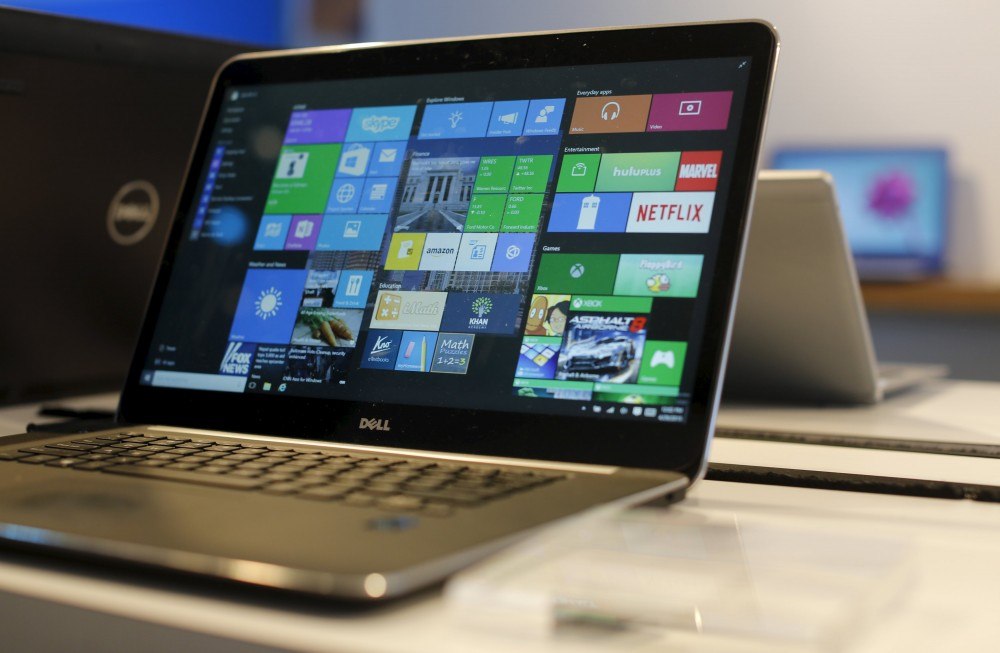
One of the main hurdles for companies to shift from Windows to other operating systems is enterprise software or ERPs. Enterprise Resource and Planning packages mostly run under Windows like SAP’s R/3, Oracle’s business suites and Microsoft’s own Dynamics brand. We may now be in the cloud era, but there are thousands of companies out there still entrenched in client-server. Microsoft’s Satya Nadella’s cloud-first vision seems to be making it easier for companies to move into the cloud and out of the Windows ecosystem.
The idea seems counterproductive for Microsoft since for more than a decade; they led us to believe that Microsoft is Windows and Windows is Microsoft. It turns out that Windows accounts for only ten percent of the software giant’s revenue, and that number seems to be slowly shrinking. Steve Ballmer must be giving it all he has not to bite Satya’s head off when they get together. But he has to admit, Satya’s current direction has been doing wonders for Microsoft. And one of those directions is making all their products cross-platform. Office, SQL Server, and the company’s ERPs.
Microsoft currently has four Enterprise Resource Planning suites under the Dynamics brand. Microsoft Dynamics GP (Great Plains) which I’ve previously worked on, Microsoft Dynamics NAV (Navision), Microsoft Dynamics AX (Axapta) and Microsoft Dynamics SL (Solomon IV). Microsoft has recently released the latest version of Microsoft Dynamics AX, which is truly cloud-first. This version of Dynamics AX won’t be run in a virtual machine hosting Windows Server. It will be running in Azure Stack, Microsoft’s hybrid-cloud operating environment.
Dynamics AX will include and integrate with Microsoft Power BI for reporting, Azure SQL for database, Office 365 for workflow, Dynamics CRM online, and will take advantage of Azure’s advanced disaster recovery. The new release doesn’t take away from what makes Dynamics AX the forefront of Microsoft’s ERP packages but enhances it. With the new release, if companies allow it, Microsoft will also require Azure Stack for on-premises versions which will bring cloud services power within their own datacenters. Microsoft’s ERPs will no longer be so dependent on Windows. Dynamics AX will sport a new touch-enabled HTML5-based UI. Enterprise users can, therefore, use Microsoft Dynamics AX on any platform they choose whether it be a Mac, a Surface, a Chromebook or even an iPad Pro. For Windows users, Dynamics AX will be integrated with Cortana so managers can simply ask her for the latest figures.
Being smart, Dynamics AX will be using a subscription model like Office 365. The subscription can be per user or per device. The per-user license seems to be the more logical approach and depending on Microsoft might be more expensive. Next to get the cloud treatment will be Microsoft Dynamics NAV. The foremost feature of the future NAV release will be its deep integration with Office 365, especially Outlook. Customers won’t have to wait long as Microsoft has scheduled the release on the next half of 2016.
As for Microsoft Dynamics GP, the next release of the suite is set on May 1, 2016, which will feature workflow enhancements and an HTML Web client but improvements have so far been slow for this particular ERP system. The HTML Web client should help the system get past its Windows roots. For Dynamics SL, updates are also on the way in the second half of 2016 which also includes Power BI integration, enhancements to its web app and more by 2017.
We also know that the backbone for Microsoft ERPs are databases especially SQL Server. Recently, the company announced that SQL Server will be ported to Linux and that for some time now, Azure has been hosting Linux systems which accounts for up to 25 percent of its clients. Like Dynamics AX, it won’t be long before the other suites get ported to Azure and other platforms which further clouds Windows’ future. If so, it would be a blessing to large companies as well as users that support BYOD. Users can access their ERPs on their Macs, iPads, and Chromebooks and enjoy their work. Companies would also be free of Windows Server and OS licensing as well as datacenter maintenance when their ERPs are all in the cloud. Executives and field agents will also be freed from in-premises restrictions of older versions and can access their ERP data directly from anywhere. Freedom from Windows, it feels strange.

